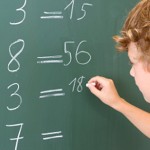Time and Measures Worksheet and Explanation
We’ve structured this information to help children with their education. It is targeted at children in years 5 and 6 and the questions for the worksheet have been stripped from past papers. Having an understanding of time and measures is part of the primary school curriculum and children will deal with time and measures in both KS1 and KS2.
The Information below will give an overview of the topic and we have included a detailed worksheet with full answers. The worksheet includes 25 time and measures questions and is relevant for KS2 pupils approaching their SATS test.
Download Free Time and Measures Worksheet – Questions
Download Free Time and Measures Worksheet – Answers… Coming Soon
If you are not ready to download the worksheets yet, then read on for some information about time and measures. This has provided to introduce the topics covered in the worksheet for those that might be unfamiliar but also as a quick revision tool for those that would like a quick refresher before accessing the worksheet.
Time and Measures Explanation
Time Explained
Time is a concept that children will no doubt have become used to hearing even before they understand what it is. We use time and its terminology every day, so it is important that children develop a thorough understanding of how to tell the time, how time is measured, adding and subtracting time and 24 hr and 12 hr clocks.
How to Tell the Time
Children usually start learning the time on a 12 hr clock, first learning the hour hand and its position relative to the hour of the day. They will also be introduced to morning and night or AM and PM and problems such as the difference between 3 am and 3 pm. After this they will be introduced to the minute hand how this relates to the hour hand and vice-versa.
Time terminology will also be referred to during this experience and children should be able to understand phrases such as ‘quarter to’, ‘quarter past’ and ‘ten to’.
After becoming confident with the 12 hr clock, pupils will also learn to read a 24 hr digital clock and times relation to the time of the day.
Measures Explained
There are many different types of measurement used in daily life. It is important that children understand first what each unit is measuring, how they can be converted and how this can be related to the world surrounding them. A common method of teaching measures is applying them to classroom settings so allowing children to define the world around them in its various units. This might include measuring chairs, weighing stationary, taking the temperature of various points etc.
Types of Measure
Standard units are taught at KS1 and KS2. These are the base units or units upon which similar measures are based upon e.g. a kilometre is based upon a metre. Although the majority of scientific units are measured using the metric system (gram, metre, and litre) children will also become aware of the imperial system of measurement due to its historical relevance and the fact it is still used for certain measures in the UK such as the mile, pint and pound.
The most common types of measure are:
- Monetary value/Cost – so attributing a price (£ or p) to another value such as time or weight e.g. £1 for 100g.
- Duration/Time – using seconds (sec), minutes (min), hours (hr), days, weeks, months, seasons and years.
- Capacity/Volume – using millilitres (ml) and litres (l).
- Weight/Mass – using grams (g) and kilograms (kg).
- Length/Distances – using millimetres (ml), centimetres (cm), metres (m) and kilometres (km).
- Temperature – using degrees Celsius (°C).






